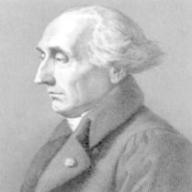For example, the potential energy of an object under gravitation (Ep) = mgh
The three parameters are recorded as follows :
m = 10+-1 kg
g = 9.8+-0.1 ms^-2
h = 10+-1 m
The percentage error of the measurement is:
[ (11x9.9x11) - (10x9.8x10) ] / (10x9.8x10) = +22.2%
OR [ (9x9.7x9) - (10x9.8x10) ] / (10x9.8x10) = -19.8%
It is obvious that the two values is not the same.
Hence, the maximum percentage error is 22.2%.
In physics, however, the general method for solving this problem is:
maximum percentage error = (1/10) + (0.1/9.8) + (1/10) = 21.02%
which is easier to calculate but is not coincide with the real one (22.2%).
Moreover, I found this value is always approximate to the mean value of the above two values:
(22.2+19.8)/2 = 21 ~~21.02
Why should we using this general but wrong method to calculate the percentage error in an experiment?
關於計算 percentage error 的問題 (物理)
2010-12-05 1:50 am
回答 (1)
2010-12-05 8:02 am
✔ 最佳答案
In fact, there are thousands of ways to calculate errors. The first way that you mentioned (i.e. the one using the largest anf smallest values of the result) is assuming a uniform distribution of the measured data. The seond method makes use of the max uncertainities in each physical parameters, without putting assuming on the distribution of measurment data. This is the advantage of using this method.There is no point to say which method is right or wrong. It all depends on the situation and how well you know the raw data are distributed.
收錄日期: 2021-04-29 17:38:02
原文連結 [永久失效]:
https://hk.answers.yahoo.com/question/index?qid=20101204000051KK00978

